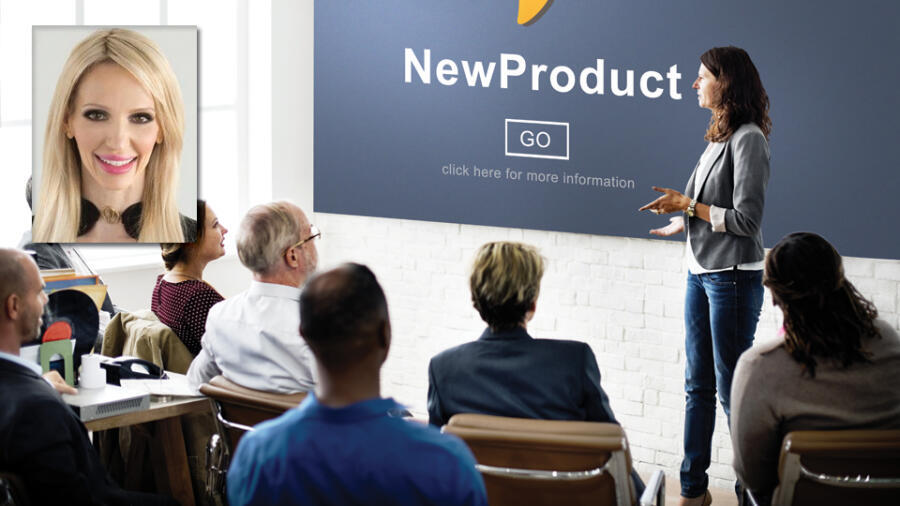The end of the month is near and that dreaded situation arises: Sales are low and the business may miss its targets. The team is under increasing pressure and staff members are putting in the hours — but the desired results just aren’t there. Where is it all going wrong?
Many variables can affect retail sales, some of which are outside the control of any business. But imagine that the economy is healthy and an adult goods retailer is selling popular items at competitive prices. The in-store displays are visually striking and plenty of stock is on hand. Yet, most potential customers leave empty-handed. Could staff sales skills be an issue?
Training should not be a one-time affair. Even the most experienced staff will want to refresh their product knowledge at some point.
Among the critical skills that sales people need are product knowledge and the ability to apply it. Having a thorough understanding of products can turn staff into experts and advocates for a brand. When salespeople can explain how a product’s features will benefit someone and answer questions about it, they can leave customers thinking, “I need this now!” In other words, staff need to understand what they are selling and why.
Is training worth the costs?
If training staff on product knowledge is so important, why doesn’t it always receive the attention it deserves? One reason is that the benefits may not always justify the costs, especially if staff turnover is high. However, for every dollar saved by skimping on training, many more can be lost because customers can’t find knowledgeable staff to help them make a purchase. When businesses do invest in staff product knowledge training, the results are telling.
Consider the findings of a study published in the Harvard Business Review a few years ago. In the study, a department store gave its retail staff access to voluntary, online, self-guided training on the features of each brand’s products. Participants received commissions, which provided an incentive to learn how to sell more, and brands that developed the training gave them product discounts based on how many modules they completed. Results showed that for every training module staff members completed, their sales rate increased by 1.8% on average. Training was voluntary, so not everyone did it. For staff who participated, the average hourly sales rate was a huge 46% higher than that of employees who refrained. Yes, those staff members were also selling more to begin with, but this accounted for only about half the difference; the training explained the rest.
How to make training effective
You’ve read the case for staff product knowledge training, but not just any type will do. To get staff excited about training, it should be engaging, relevant and practical. So, here are five tips for effective training.
1. Provide clarity
Start with an outline of the training outcomes, skills and knowledge covered, and the tasks involved, including any assessments. Then, organize the content into clear and concise chunks so it’s easier to understand and less likely to overwhelm. This can involve dividing the content into sections with basic headings and using short paragraphs that focus on must-know information. Bulleted lists that summarize key messages and simple tables or charts that allow for easy comparisons can also be helpful. Strategies like these can prevent information overload and enable staff to quickly scan and refer to the content later.
2. Design for variety
Just as variety makes for an exciting adult toy collection, the same can be said of product knowledge training. Working through text-heavy training content, no matter how useful, can get boring. Where possible, design content with opportunities for learning by seeing, hearing or touching and doing. Include video demonstrations of products, infographics that simplify information or express statistics, and images that command attention. Design training to be an active rather than passive experience with product testers to try, role-plays to perform — even if staff do so alone — and discussion points to explore. Incorporating varied formats is not only more interesting, but also more likely to suit a team with different learning styles.
3. Provide rewards
Make training compulsory and attendance will be up, but engagement may be down. On the other hand, the risk of voluntary training is that not everyone may see it through. Then, there’s the issue of whether it’s undertaken during work hours or personal time, in which case staff may expect to be compensated. Whatever the scenario, rewards for successful completion may help, like the product discounts staff received in the department store study.
Another strategy: Offer prizes to staff who score highest in training-related assessments. Then, to encourage staff to keep applying their learnings, why not consider a sales performance incentive program, for which only those who complete and pass the training are eligible? Sometimes there’s nothing like healthy competition and rewards to make staff interested in elevating their game.
4. Team up with allies
It’s cliche, but often true: Teamwork makes the dream work. For businesses that train staff about branded products, the brands can become their greatest allies. Brands want their product features and benefits accurately explained to customers and that requires knowledgeable sales people. So make the most of brands that offer to help develop, run and otherwise support staff product knowledge training — it’s a win for the brand, for customers and for your business.
5. End with a cheat sheet
Training should not be a one-time affair. Even the most experienced staff will want to refresh their product knowledge at some point. Make it easy for them by ending training with a digital and/or hard copy “cheat sheet” that summarizes key points and gives the answers to frequently asked questions.
Include sources of support too, so sales staff know where and how to access help when needed. Measure the results and make improvements. Once training is over, allow a period of time before using appropriate metrics to determine its effects on variables of interest to the business. While the number of participants may be flattering, it can also mislead. The objective knowledge staff obtained can be measured with assessments — but did it make a positive difference in their sales rates? If not, why? If the training was successful, which elements can be retained or changed to make it even more so next time?
In conclusion, investing in comprehensive retail staff training is essential for the success of any retail business. Empowering employees with the right skills, knowledge and confidence enables them to provide exceptional customer service and contribute to a positive shopping experience. Well-trained staff not only enhance customer satisfaction, but also help to foster a thriving work environment, ultimately leading to long-term growth and profitability for your business.
Vanessa Rose is a certified clinical sexuality coach and the account manager for Australia and New Zealand at Svakom.









